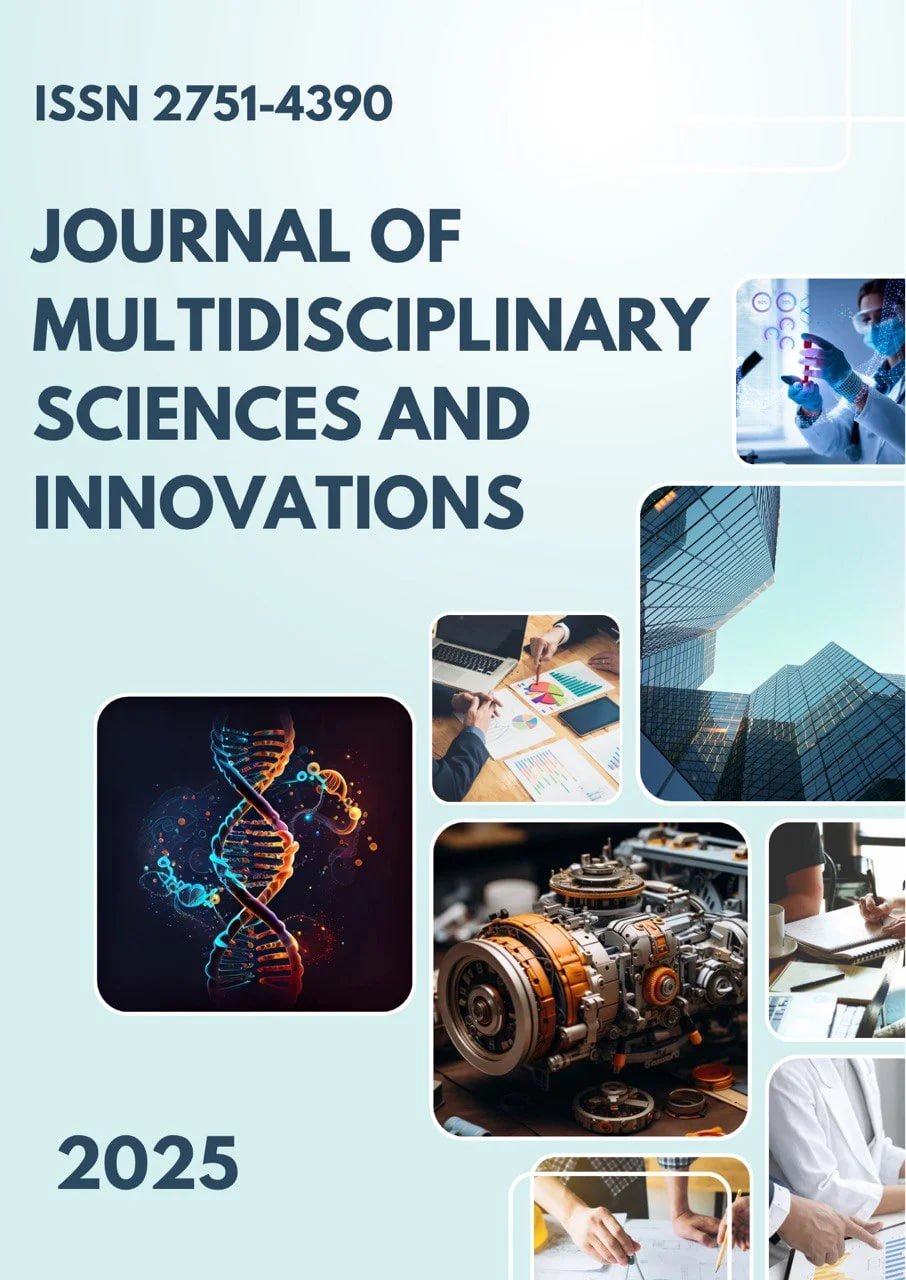MODERN APPROACHES TO EARLY DETECTION AND IMPROVEMENT OF DIAGNOSTIC METHODS FOR TEETHING SYNDROME IN CHILDREN
Main Article Content
Abstract
While the eruption of primary teeth is a natural stage in every child's life, its symptoms are often confused with those of other, more serious childhood illnesses. This phenomenon, known as "diagnostic overshadowing," can delay the timely diagnosis and treatment of dangerous pathologies such as pneumonia, meningitis, or sepsis. The subjectivity of existing diagnostic methods and the lack of clear criteria exacerbate this problem. Therefore, improving the methods for early detection and differential diagnosis of teething syndrome using objective, scientifically-based approaches is a relevant and urgent task in pediatrics and pediatric dentistry.
Downloads
Article Details
Section

This work is licensed under a Creative Commons Attribution 4.0 International License.
Authors retain the copyright of their manuscripts, and all Open Access articles are disseminated under the terms of the Creative Commons Attribution License 4.0 (CC-BY), which licenses unrestricted use, distribution, and reproduction in any medium, provided that the original work is appropriately cited. The use of general descriptive names, trade names, trademarks, and so forth in this publication, even if not specifically identified, does not imply that these names are not protected by the relevant laws and regulations.
How to Cite
References
1.Ali, S., & Ali, A. (2023). Association between salivary cortisol levels, dental anxiety, and dental caries in children: A cross-sectional study. Dentistry Journal, 11(x). https://www.researchgate.net/publication/373506265_Association_between_Salivary_Cortisol_Levels_Dental_Anxiety_and_Dental_Caries_in_Children_A_Cross-Sectional_Study
2.American Dental Association. (2023, October). Salivary diagnostics. ADA.org. https://www.ada.org/resources/ada-library/oral-health-topics/salivary-diagnostics
3.Barboza, M. N., de Oliveira, F. L., Frazier, J., & de Paula, L. M. (2024). Salivary IL-6 as a biomarker for early childhood and rampant caries: Insights from a cross-sectional study. Journal of Molecular and Pathological Sciences, 13(2), 293. https://www.mdpi.com/2227-9059/13/2/293
4.Caruso, S., Gatto, R., & Cefalo, M. (2018). Association between salivary cortisol level and caries in early childhood. European Journal of Paediatric Dentistry, 19(1), 11-14. https://www.ejpd.eu/pdf/EJPD_2018_1_1.pdf
5.Cleveland Clinic. (n.d.). Teething/Teething syndrome. my.clevelandclinic.org. https://my.clevelandclinic.org/health/articles/11179-teething-teething-syndrome
6.Coastal Kids Pediatric Dentistry. (n.d.). Salivary diagnostics: Harnessing saliva to detect and monitor systemic diseases. coastalkidsdo.com. https://www.coastalkidsdo.com/post/salivary-diagnostics-harnessing-saliva-to-detect-and-monitor-systemic-diseases
7.Davis, K. A., Mountain, R. V., Pickett, O. R., Den Besten, P. K., Bidlack, F. B., & Dunn, E. C. (2020). Teeth as potential new tools to measure early-life adversity and subsequent mental health risk: An interdisciplinary review and conceptual model. Biological Psychiatry, 87(6), 502-513. https://mghpsychnews.org/baby-teeth-a-new-approach-to-identifying-early-adversity-and-children-at-risk-for-psychiatric-illness/
8.Feldens, C. A., Faraco, I. M., Jr., Ottoni, A. B., Feldens, E. G., & Vitolo, M. R. (2010). Teething symptoms in the first year of life and associated factors: A cohort study. Journal of Clinical Pediatric Dentistry, 34(3), 249-252. https://oss.jocpd.com/files/article/20220808-956/pdf/JOCPD.34.3.249.pdf
9.Franciscan Health. (2023, April 25). Teething or sick: How to tell in your baby. franciscanhealth.org. https://www.franciscanhealth.org/community/blog/teething-or-sick-how-to-tell-in-your-baby
10.Go Kids Pediatric Dentistry. (n.d.). The future of pediatric dentistry: How new technologies are transforming children's dental care. gokidspediatricdentistry.com. https://gokidspediatricdentistry.com/blog/the-future-of-pediatric-dentistry-how-new-technologies-are-transforming-childrens-dental-care/
11.Hegde, M. N., Attavar, S., Shetty, N., & Hegde, N. D. (2019). Saliva as a biomarker for dental caries: A systematic review. Journal of Conservative Dentistry, 22(1), 2-6. https://www.researchgate.net/publication/331462707_Saliva_as_a_biomarker_for_dental_caries_A_systematic_review
12.Iacob, S. M., Chisnoiu, A. M., Lascu, L., Berar, A. M., Chisnoiu, R., & Picos, A. M. (2023). Salivary cortisol as a biomarker for assessing fear and anxiety in patients with molar–incisor hypomineralization. Diagnostics, 15(4), 489. https://www.mdpi.com/2075-4418/15/4/489
13.Jhunjhunwala, G., Mathur, V. P., & Tewari, N. (2025). Global prevalence of teething problems in infants and children-A systematic review and meta-analysis. International Journal of Paediatric Dentistry, 35(3), 608-624. https://pubmed.ncbi.nlm.nih.gov/39344021/?utm_source=FeedFetcher&utm_medium=rss&utm_campaign=None&utm_content=1vyK0bnlSnx3ROWRw4BZasPT3B6VsB1j1Ko8yIaKhKhqoIjY9I&fc=None&ff=20241214183255&v=2.18.0.post9+e462414
14.Johns Hopkins Medicine. (n.d.). What you should know about babies teething. hopkinsmedicine.org. https://www.hopkinsmedicine.org/health/conditions-and-diseases/teething/what-you-should-know-about-babies-teething
15.Kambalimath, H. V., Jain, R., Asawa, K., Singh, A., Gupta, A., & Singh, M. (2015). Recent advances in diagnosis of dental caries. Journal of Natural Science, Biology and Medicine, 6(2), 313-318. https://pmc.ncbi.nlm.nih.gov/articles/PMC4999630/

